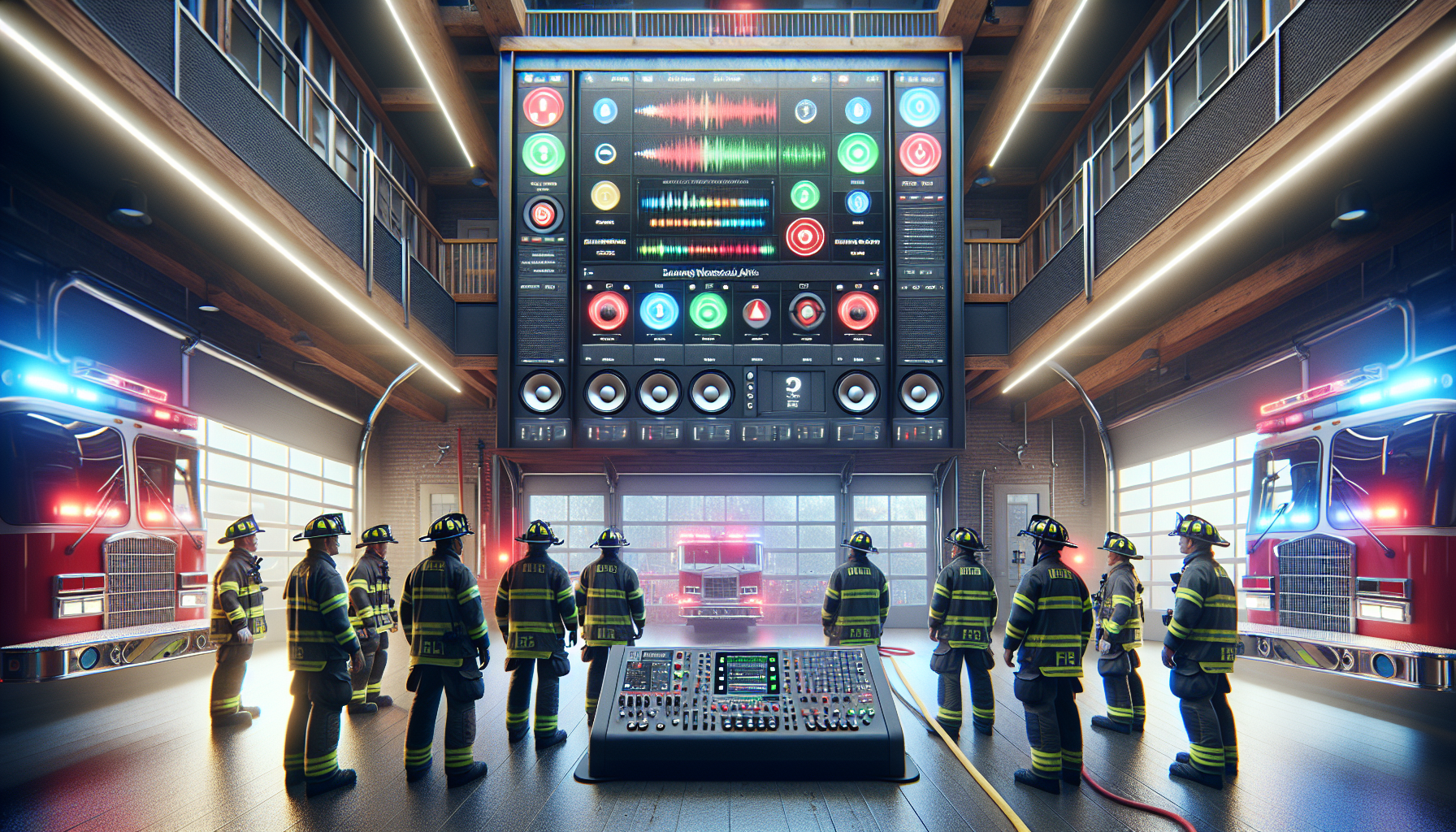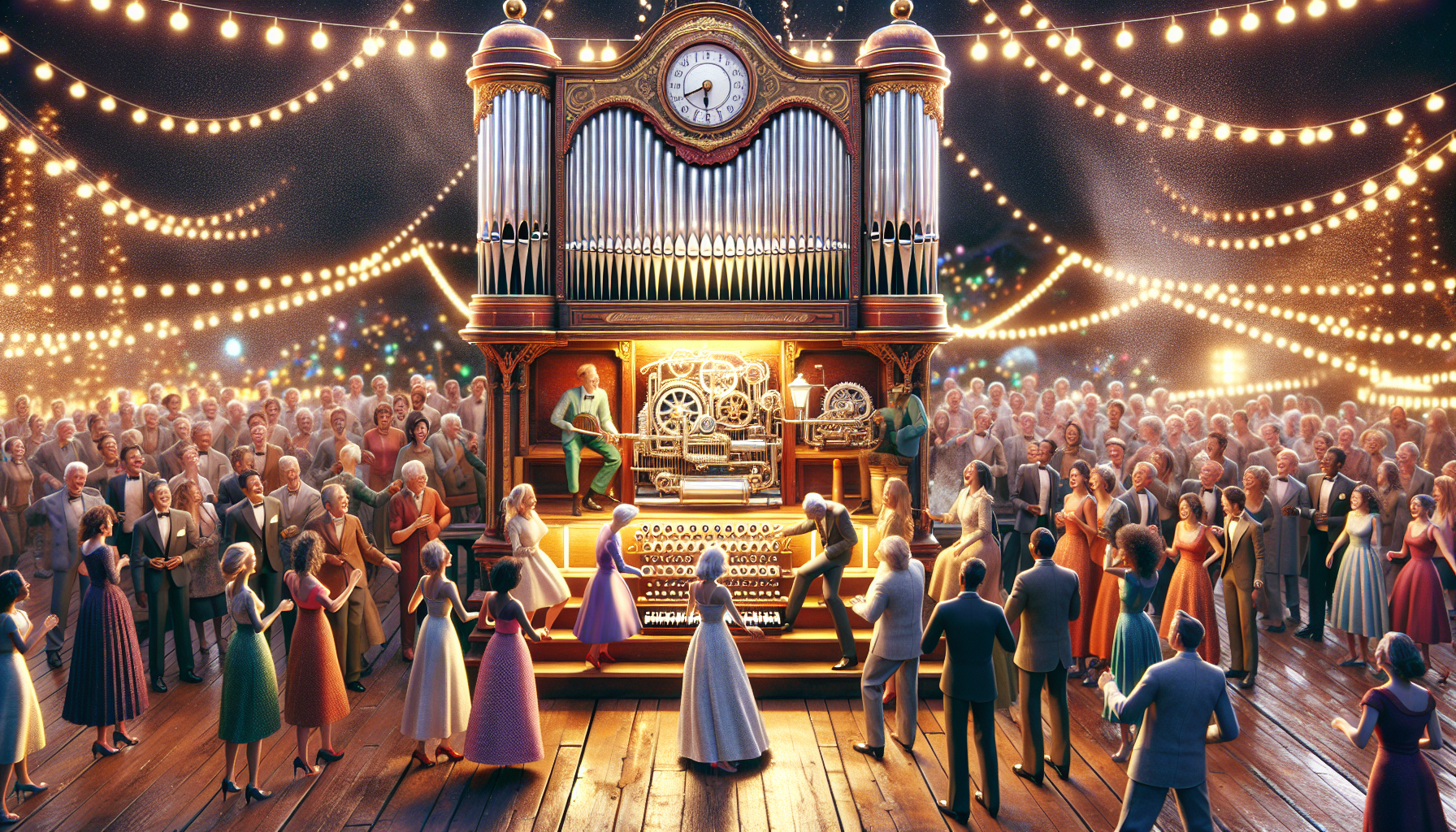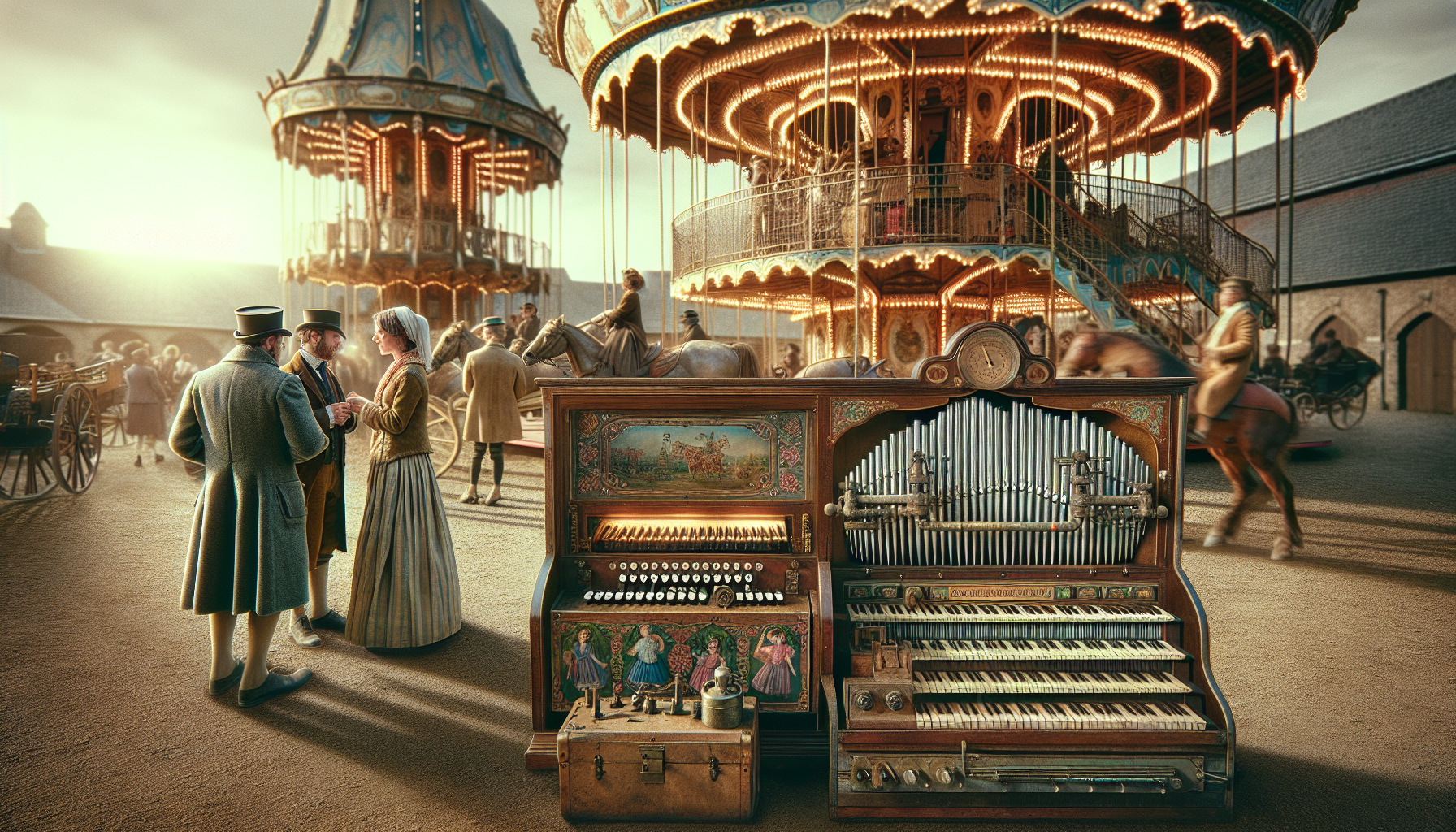In a world where technology often seems to outpace imagination, there exists a realm where the past and future coalesce in a dance of gears, artistry, and enchantment. Welcome to the mesmerizing world of mechanical puppets, a domain where the precision of engineering meets the boundless creativity of storytelling. These intricate creations, born from the marriage of mechanical ingenuity and artistic vision, captivate the senses and ignite the imagination, offering a glimpse into a universe where the inanimate springs to life with a mere turn of a key. 🌟
Mechanical puppets, or automata, have fascinated humankind for centuries, their origins tracing back to ancient civilizations where they were revered as magical artifacts. These animated sculptures not only entertained royalty but also served as symbols of technological prowess and cultural advancement. The allure of automata lies in their ability to mimic life so convincingly, blurring the line between the mechanical and the organic. As we journey through the history of these enchanting creations, we will explore the ingenuity of their makers and the profound impact they have had on art, science, and society. 📜
Our exploration will begin with a historical overview, delving into the origins of mechanical puppets in ancient Greece and China, where they were crafted as both toys and tools of philosophical inquiry. From there, we will traverse through the Middle Ages and the Renaissance, periods that saw a renaissance in mechanical innovation, fueled by a renewed curiosity about the natural world. It was during these times that automata evolved from simple novelties into sophisticated devices that entertained and inspired audiences across Europe and beyond. We will highlight key figures, such as Leonardo da Vinci, whose designs laid the groundwork for future advancements, and discuss the role of automata in the courts of kings and queens. 🏰
As we venture further, the narrative will bring us to the 18th and 19th centuries, the golden age of automata, where these creations reached unparalleled levels of complexity and artistry. This era witnessed the rise of master craftsmen like Pierre Jaquet-Droz and Henri Maillardet, whose creations—such as the famous writing automaton and the enchanting mechanical dolls—continue to astonish even today. We will delve into the technical innovations that made these wonders possible, examining the intricate mechanisms that breathe life into metal and wood. This section will also consider the cultural and social factors that fueled the popularity of automata, including the Enlightenment’s emphasis on reason and the burgeoning Industrial Revolution. ⚙️
Finally, our journey will bring us to the modern day, where the legacy of mechanical puppets lives on in unexpected ways. We will explore how contemporary artists and engineers draw inspiration from the automata of the past, incorporating modern technology to create interactive installations and performances that captivate audiences worldwide. From the steampunk aesthetic that romanticizes Victorian-era machinery to the use of robotics and AI in theatrical productions, the spirit of automata continues to inspire and challenge our perceptions of art and technology. As we conclude, we will reflect on the enduring appeal of mechanical puppets and consider what they might reveal about the human desire to create life from lifelessness, a pursuit that transcends time and technology. 🌐
Prepare to be enchanted by tales of creativity and craftsmanship, as we peel back the layers of history to reveal the magic woven into every cog and gear. The world of mechanical puppets awaits—ready to surprise, delight, and remind us that sometimes, the most extraordinary wonders are those that bridge the realms of the possible and the impossible. Welcome to a journey through time, where imagination takes form and the inanimate springs to life before your very eyes. ✨
The Enchanting History of Mechanical Puppets
Mechanical puppets, also known as automata, have captivated audiences for centuries with their intricate designs and lifelike movements. The history of these fascinating creations dates back to ancient times, with early examples found in ancient Greece and China. These early automata were simple devices, often powered by water or steam, and used in religious ceremonies or as entertainment for the elite.
During the Middle Ages, mechanical puppets became more sophisticated, as advancements in clockmaking allowed for greater precision and complexity. These innovations were particularly prevalent in Europe, where skilled craftsmen created intricate automata that could perform a variety of tasks. Notable examples from this period include the famous clockwork automata of the Islamic Golden Age, which featured complex mechanisms and lifelike movements.
In the 18th and 19th centuries, the popularity of automata reached its peak, with master craftsmen like Pierre Jaquet-Droz and Henri Maillardet creating masterpieces that amazed audiences around the world. These mechanical puppets were often designed to resemble animals, musicians, or dancers and were capable of performing intricate sequences of movements. Their intricate craftsmanship and lifelike behavior made them a marvel of engineering and artistry.
The Role of Automata in Entertainment and Art
Automata have long been associated with entertainment and art, serving as both a source of wonder and a testament to human ingenuity. In the 18th and 19th centuries, mechanical puppets were often featured in public exhibitions and private collections, drawing large crowds eager to witness their lifelike performances. These exhibitions provided a glimpse into the future of technology and captivated audiences with their seemingly magical displays.
In addition to their role in entertainment, automata also played a significant role in the development of modern robotics and artificial intelligence. The intricate mechanisms and lifelike movements of these mechanical puppets served as a source of inspiration for inventors and engineers, paving the way for the development of more advanced technologies. Today, the legacy of automata can be seen in the field of robotics, where engineers continue to push the boundaries of what is possible with machines.
The artistic value of mechanical puppets cannot be overstated. Many of these creations are considered masterpieces of craftsmanship, combining intricate mechanics with exquisite artistry. The attention to detail and the skill required to create these automata make them highly prized by collectors and museums around the world. Whether as a form of entertainment or as an art form, mechanical puppets continue to captivate audiences and inspire creativity.
How Mechanical Puppets Work
At the heart of every mechanical puppet is a complex system of gears, levers, and cams that work together to create lifelike movements. These mechanisms are often powered by a spring or weight, which provides the energy needed to drive the puppet’s movements. The complexity of the mechanisms can vary greatly, with some automata featuring hundreds of individual components working in harmony to create a seamless performance.
The design and construction of these mechanisms require a deep understanding of mechanical engineering and an eye for detail. Each component must be precisely crafted and carefully assembled to ensure smooth and accurate movement. The result is a lifelike performance that can mimic the movements of living creatures with astonishing accuracy.
The table below provides a comparison of different types of mechanical puppets and their mechanisms:
| Type of Automaton | Mechanism | Power Source |
|---|---|---|
| Animal Automata | Complex gears and levers | Spring-powered |
| Musician Automata | Cams and gears for instrument play | Weight-driven |
| Dancer Automata | Intricate cam systems for fluid movement | Spring or weight |
These mechanical puppets demonstrate the incredible potential of human ingenuity, showcasing the ability to combine art and engineering in a single creation. Each automaton is a testament to the skill and creativity of its creator, and a reminder of the magic that can be found in the world of mechanical puppetry.
Modern Innovations in Mechanical Puppets
In recent years, advancements in technology have led to new innovations in the world of mechanical puppets. Modern automata are often equipped with sensors and microcontrollers, allowing them to perform more complex tasks and interact with their environment in real-time. These innovations have opened up new possibilities for the use of mechanical puppets in entertainment, education, and even therapy.
One notable example of modern innovation in mechanical puppets is the work of animatronics, which combines traditional automata techniques with modern electronics to create lifelike robotic creatures. These creations are often used in films and theme parks, providing audiences with an immersive and realistic experience. Animatronics have become an integral part of the entertainment industry, showcasing the potential of modern technology to bring mechanical puppets to life.
Check out this fascinating video on modern automata: The Magic of Modern Automata – YouTube Channel
Building Your Own Mechanical Puppet
For those interested in exploring the world of mechanical puppets, building your own automaton can be a rewarding and educational experience. The process of designing and constructing a mechanical puppet involves a combination of creativity, engineering, and problem-solving skills. Whether you’re a hobbyist or an aspiring engineer, creating your own automaton can provide valuable insights into the world of mechanics and robotics.
To get started, you’ll need a basic understanding of mechanical principles and access to the necessary tools and materials. There are numerous resources available online, including tutorials and guides, to help you design and build your own mechanical puppet. Additionally, joining a community of enthusiasts can provide valuable support and inspiration as you embark on your journey into the world of mechanical puppetry.
When building your own automaton, consider the following steps:
- Design your puppet: Plan the movements and appearance of your automaton.
- Select materials: Choose materials that are durable and suitable for the intended movements.
- Construct the mechanism: Assemble the gears, levers, and cams to create the desired movement.
- Test and refine: Test your automaton and make adjustments to improve performance.
The Future of Mechanical Puppets
As technology continues to advance, the future of mechanical puppets holds exciting possibilities. Innovations in robotics and artificial intelligence are likely to influence the design and capabilities of future automata, allowing for even more complex and lifelike creations. The integration of advanced sensors and AI could enable mechanical puppets to interact with their environment in new and sophisticated ways, opening up new possibilities for their use in various fields.
In the realm of entertainment, mechanical puppets are expected to play an increasingly important role, offering audiences immersive experiences that blend reality and fantasy. As the demand for interactive and engaging content continues to grow, the potential for mechanical puppets to captivate and entertain audiences remains as strong as ever.
Mechanical puppets are also likely to find new applications in education and therapy, where their lifelike movements and interactive capabilities can provide valuable learning and therapeutic experiences. Whether used to teach mechanical principles or as a tool for rehabilitation, the potential for mechanical puppets to enrich our lives is boundless.

Conclusion
Unleashing the enchanting universe of mechanical puppets has been an extraordinary journey through the crossroads of art, technology, and storytelling. Throughout this article, we have ventured into the historical backdrop that frames these captivating creations, explored the intricacies of their design and engineering, and marveled at their impact on culture and society. As we draw this exploration to a close, it’s essential to revisit the pivotal themes we’ve uncovered, underscore the profound significance of mechanical puppets, and inspire you to engage further with this mesmerizing world.
Our journey began by tracing the origins of mechanical puppetry, highlighting how ancient civilizations laid the groundwork for this intricate art form. From the automatons of Ancient Greece and Rome to the ingenious designs of the Islamic Golden Age, these early innovations set the stage for a rich tradition that would continue to evolve over centuries. The Renaissance period marked a significant leap forward as artists and engineers combined their expertise to create increasingly sophisticated automata, captivating audiences across Europe.
Fast forward to the modern era, and we witness the remarkable transformation of mechanical puppets into complex machines that blur the lines between art and technology. Today’s puppeteers and engineers continue to push boundaries, incorporating cutting-edge robotics and digital technologies to create lifelike movements and expressions that leave audiences spellbound. This evolution reflects not only technological advancement but also a deepening understanding of human creativity and expression.
Mechanical puppets are more than mere objects of fascination; they serve as powerful storytellers capable of conveying complex narratives and emotions. Their ability to transcend language and cultural barriers makes them unique tools for communication and education. From theatrical performances to educational exhibits, mechanical puppets have found diverse applications that enrich our cultural landscape.
Moreover, the artistry and craftsmanship involved in creating these mechanical marvels cannot be overstated. Each puppet is a testament to the skill and imagination of its creator, embodying a blend of meticulous engineering and artistic vision. This fusion of disciplines underscores the importance of interdisciplinary collaboration in achieving breakthroughs that capture the human spirit.
As we reflect on the significance of mechanical puppets, it becomes clear that their impact extends beyond the realm of entertainment. They inspire us to reconsider our relationship with technology, challenging us to embrace innovation while preserving the essence of human creativity. In a world increasingly dominated by digital experiences, mechanical puppets remind us of the tangible, tactile joy of creation and the timeless appeal of storytelling.
In closing, we invite you to delve deeper into the mesmerizing world of mechanical puppets. Whether you’re an artist, engineer, educator, or simply an enthusiast, there’s a wealth of knowledge and inspiration to be discovered. We encourage you to share your thoughts, experiences, and insights in the comments section below. Your engagement not only enriches our understanding but also fuels the passion that drives this vibrant community forward.
Let this be a call to action: explore, create, and share the magic of mechanical puppets. 🧩✨ Whether through attending a live performance, visiting an exhibit, or even attempting to build your own automaton, there are countless ways to connect with this enchanting art form. By doing so, you contribute to a legacy that continues to captivate and inspire generations.
For those eager to learn more, we recommend exploring resources such as the International Puppetry Arts Institute and The Automata Blog, both of which offer a wealth of information and insights into this fascinating field.
Thank you for joining us on this journey. We hope it has sparked your curiosity and ignited a passion for the art and science of mechanical puppets. Let us continue to celebrate and explore this magical world together.
Toni Santos is a visual historian and creative artisan whose work channels the bold spirit of the steam-powered era—a time when imagination, mechanics, and ambition converged to reshape the modern world. Through richly detailed visual narratives and handcrafted design, Toni celebrates the legacy of steam innovation as both an artistic and technological revolution.
Driven by a passion for mechanical aesthetics, forgotten inventions, and industrial-age ingenuity, Toni reimagines the world of steam through illustrations, tactile artifacts, and storytelling that capture the poetry of pressure, motion, and invention. From piston-driven engines to brass-detailed diagrams, each piece reveals how steam wasn’t just power—it was promise.
With a background in visual design and historical research, Toni brings a craftsman’s eye and a dreamer’s heart to the stories of tinkerers, inventors, and visionaries who shaped the 19th century. His work doesn’t merely document machines—it honors the culture, courage, and creativity that drove a world to reimagine itself through gears, valves, and vapor.
As the creative voice behind Vizovex, Toni shares curated articles, reconstructed blueprints, and visual interpretations that bring this industrial past to life. His collections serve as a tribute to:
The elegance of steam-era design and innovation
The human stories behind great mechanical feats
The aesthetic beauty found in function and form
The echo of invention in today’s creative world
Whether you’re a history lover, a fan of steampunk, or an admirer of antique technology, Toni welcomes you into a world where art and machinery fuse, one cog, one drawing, one rediscovered marvel at a time.





